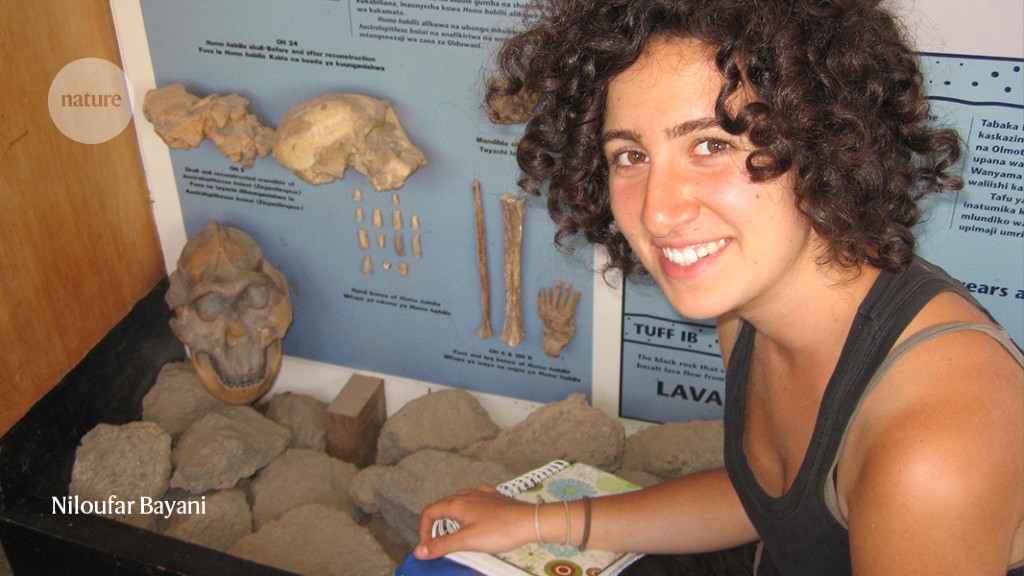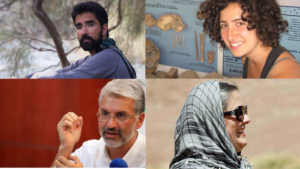برای خواندن این مطلب به فارسی اینجا را کلیک کنید
Prominent Environmental Activists Temporarily Released in Iran Amid Unresolved Case
Last week, coinciding with the Norooz holiday, a group of well-known Iranian environmental activists who had worked on the preservation of the Iranian cheetah were granted temporary leave from prison to spend the festive days with their families. This marks the first time in five years that Niloufar Bayani, Sepideh Kashani, Homan Jokar, Amirhossein Khaleghi, Taher Qadirian, and Sam Rajabi have been permitted to leave prison simultaneously, as they continue to serve their sentences in a highly contentious case. However, Morad Tahbaz, an Iranian-British-American prisoner who was also arrested and accused of collecting classified and confidential information from strategic areas under the guise of environmental projects, was not among those granted leave. Foreign governments and human rights organizations reject these allegations against him, asserting that the Islamic Republic is holding Tahbaz hostage for extortion purposes.
The fate of environmental activists in Iran has been a highly debated issue for the past five years, raising questions about the motivations behind the case and its overall implications.
Iran’s Crackdown on Environmental Activists Heightens Concerns
Over the past decade, Iran has experienced a surge in arrests and imprisonment of environmental activists under accusations of espionage for external foreign powers. This crackdown has intensified as concerns about the country’s environmental issues, such as the drying up of Lake Urmia, have increased.
Citizens and environmentalists have been increasingly vocal in their criticism of the Iranian government’s “weak response” to the environmental challenges, especially in regard to Lake Urmia, the largest inland lake in Iran and the third largest saltwater lake in the world. Protests emerged more than a decade ago as activists blamed dam building projects and construction near the lake for reducing water inflow and hastening its desiccation.
In 2011 alone, hundreds were arrested by the government’s security agencies for protesting the issue. Human Rights Watch highlighted the Iranian government’s continued efforts to arrest and intimidate activists and members of environmental protection organizations in September of that year. Joe Stork, the director of the Middle East department of Human Rights Watch, stated: “The new round of arrests in Iran shows the intolerance of the Iranian authorities against any kind of criticism.”
The persecution of environmental activists in Iran escalated in the years that followed, with over 55 environmental activists arrested in various Iranian cities in January and February 2018. Among the most notable detainees were Bayani, Kashani, Jokar, Khaleghi, Qadirian, Rajabi, Tahbaz, Abdol Reza Kohpayeh and Kavos Seyed Emami.
Many of those arrested in the winter of 2018 were affiliated with the Persian Wildlife Heritage Foundation or the Lavardin Nature Conservators Institute. Despite the lack of evidence against these individuals, as stated by Eisa Kalantari, head of Iran’s environmental organization, they remain in detention.
Prominent environmental activists such as Kaveh Madani, Kavos Seyed Emami, Farshid Hakki, and environmental experts like Mohsen Eslami have also been detained. While some, like Kohpayeh and Madani, were eventually released, many others continue to be held behind bars.
The Iranian government’s repression of environmental activists demonstrates a growing intolerance towards dissenting voices, undermining the government’s rhetorical commitments to addressing its pressing environmental challenges.
Mysterious Death in Evin Prison Sparks Scrutiny in High-Profile Environmental Case
The suspicious death of Kavos Seyyed Emami, a former university professor, in Iran’s notorious Evin prison has cast a shadow over the case involving the environmental activists. Emami’s death on February 10, 2018 was declared a suicide by the judiciary, but his family, friends, and Amnesty International disputed the claim, calling it “suspicious” and demanding Iranian authorities to conduct an autopsy.
As the case gained complexity, Madani – the former deputy of the Environmental Protection Organization – and Eslami – an environmental pollution expert – resigned from their positions and entered self-imposed exile. The initial charge of espionage expanded as additional environmental activists linked to the PersianWildlife Heritage foundation were arrested following the announcement of Emami’s death.
Payam Darfashan, the lawyer representing Emami’s family, revealed that the preliminary forensic medical examination report indicated bruises on various parts of Emami’s body, including around the neck, likely caused by external pressure, as well as an injection site.
Espionage Allegations Against Environmental Activists Draw Global Criticism
Human rights organizations and activists worldwide have dismissed espionage allegations against Iranian environmental activists as baseless, calling the claims a pretext for repression. Tehran’s prosecutor at the time, Abbas Jafari Dolatabadi, accused the activists of using environmental projects to gather classified information in 2018. Reporting by National Geographic and The Intercept appears to indicate that the political targeting of the activists may stem from funding received from an organization founded by a U.S. billionaire who simultaneously funded a hawkish U.S. pressure group. The PersianHeritage Wildlife Foundation subsequently wrote their funders expressing alarm about a recent hawkish speech from the billionaire prior to the arrest of their staff.
However, Eisa Kalantari, the then-head of Iran’s Environmental Organization, stated in June 2018 that a government-appointed committee found no evidence to support espionage charges against the arrested wildlife activists. Kalantari added that the activists were likely detained without having committed a crime and highlighted the existence of a powerful, non-conversational “pressure group” within the Iranian government.
The same year, Iran’s Ministry of Information declared that the detained environmental activists were not spies and had not committed any crime. The ministry’s announcement followed a meeting with parliamentarians, who later criticized the prolonged detention of the environmental activists in 2019. Mohammad Reza Tabesh, the head of the parliament’s environmental faction, expressed concern about the activists’ continued detention and urged then-Judiciary Chief Ebrahim Raisi for a fair and public trial with the presence of the families’ lawyers to inform public opinion about the case.
Imprisoned Environmental Activists Launch Hunger Strike, Seek Fair Trial
On August 5, 2019, Human Rights Watch reported that two of the jailed environmental activists, Bayani and Kashani, had begun a hunger strike. A source, who chose to remain anonymous, revealed the hunger strike to the organization’s Beirut office and mentioned the possibility of two other activists joining them. The hunger strike news was also reported by the Bidarzani website, which included Jokar alongside Bayani and Kashani.
In 2019, 90 environmental associations urged a fair review of the activists’ case in a letter to the head of Iran’s judiciary, Raisi. The letter criticized the lack of legal compliance surrounding the activists and requested a fair trial, emphasizing the right to two lawyers for each defendant. Parts of the letter were published by the IRNA news agency, highlighting instances of lawlessness, such as revealing activists’ identities and personal details in the media before preliminary investigations were completed.
The court verdict was issued in February 2020, with judiciary spokesman Gholamhossein Esmaili announcing the final ruling. Tahbaz and Bayani were sentenced to 10 years in prison each, charged with “collaborating with the hostile government of America.” Jokar and Qadirian received eight years each, while Rajabi, Kashanipour, Khaleghi, and Kohpayeh received sentences between four to six years for charges related to espionage and collusion.
Although the initial espionage charge was dropped, the convictions remained controversial among lawyers due to the accusations and media coverage. The appeals court upheld the original judgments. Kohpayeh received a pardon and was released from prison during the beginning of the COVID-19 pandemic, but the other seven activists remain incarcerated.
Despite serving half of their sentences and having no criminal records, the activists had not been granted parole or amnesty. According to Article 58 of the Islamic Penal Code, those sentenced to more than 10 years can be released after serving half their term, while others can be released after serving one-third. The activists seem to have been denied this legal right.
On July 11, 2022, over 2,780 Iranian citizens penned an open letter to Gholamhossein Mohseni Ejei, the head of the judiciary, requesting a re-evaluation of the environmental activists’ case and access to legal parole facilities and pardon. The letter’s signatories referenced the Ministry of Intelligence’s previous stance on the activists, stressing the need for further caution and investigation before attributing criminal acts to them.
We urge the Iranian authorities to release all those prisoners unjustly detained, including the environmental activists, and deplore the unjust treatment of those who dedicated their careers to preserving the Iranian environment and wildlife.
Back to top
